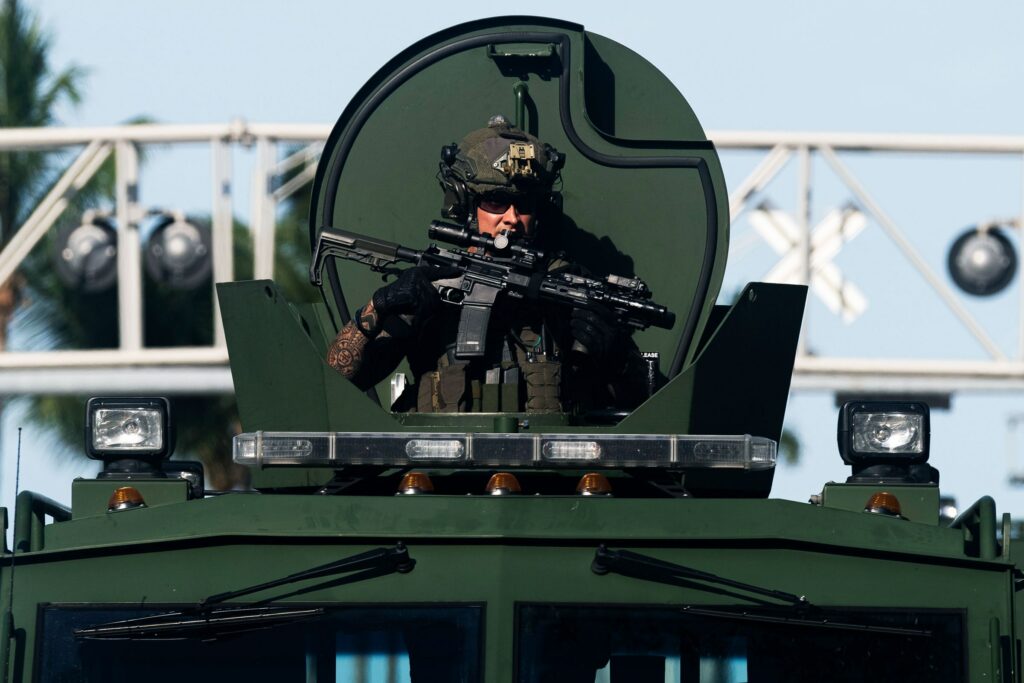One of the most direct overlaps between military families and the movement to reform policing in America is the Pentagon’s 1033 program. Given the program’s relative obscurity, we think it’s important for our community to understand what it is and how it impacts us.
What is the 1033 Program?
The 1033 program allows the Department of Defense (DoD) to transfer excess military-grade weapons and equipment to local police departments across the country. As currently designed, local law enforcement offices in participating states can view DoD’s excess inventory and request any available equipment, paying only for shipping costs.
Since the program’s inception, $7.4 billion of property has been transferred to over 8,000 different law enforcement agencies. The type of equipment varies widely, from office supplies and radios to grenades and armored vehicles.
There is currently no mandatory tracking mechanism within the 1033 program for the DoD to determine how equipment is used once it’s transferred, and offices are inconsistent in their reporting. Nor does the DoD provide any training about how to use the equipment — individual departments are in charge of training their own personnel.
Why Should Military Families Care About the 1033 Program?
There are a number of ways in which this program touches the lives of military families.
First and foremost, when weapons of war are used in our streets, this can have dangerous outcomes, especially for communities of color. Studies have shown that the mere existence of military-grade weapons have been linked to an increase in officer-involved shootings and civilian deaths. Even military families who live on base housing spend time in off-base communities — we all have a shared interest in reducing unsafe policing practices.
1033 equipment has been used against First Amendment protestors. Last summer, many of us across the country were heartbroken by the deaths of George Floyd, Breonna Taylor, Ahmaud Arbery, and countless other Black Americans at the hands of police and joined demonstrations against racism. Some of these events were disrupted by excessive force — perhaps most high-profile was the clearing of peaceful protestors from Lafayette Park, D.C., with tear gas.
The 1033 program has eroded military-civilian relations. The Lafayette Park incident was a textbook example of how military equipment makes it harder for civilians to distinguish between police officers and military service members. Secretary of Defense Mark Esper testified at a House Armed Service Committee last year about how those D.C. police officers used National Guard shields with “Military Police” written on them to push back protesters, leading many to assume the military was behind the use of force. Every time this conflation occurs, it threatens to undermine our relationships with our civilian neighbors.
SFI’s Advocacy
SFI stands strongly in support of efforts that would demilitarize our country’s approach to law enforcement. That is why we have endorsed two bills so far this year related to the 1033 program:
- H.R. 1694, “Stop Militarizing Law Enforcement Act.” Introduced by Congressman Hank Johnson, this bill would reform the 1033 program by prohibiting the most destructive weapons (armor-piercing firearms and ammunition, bayonets, grenade launchers, etc.) from being transferred and increasing reporting requirements to bolster accountability.
- Congresswoman Nydia Velazquez plans to re-introduce her “Demilitarizing Local Law Enforcement Act” this year, which would eliminate the program entirely.
Take Action
Join the chorus of voices calling to demilitarize the police. We have three things you can do today to ask the administration to demilitarize policing.

